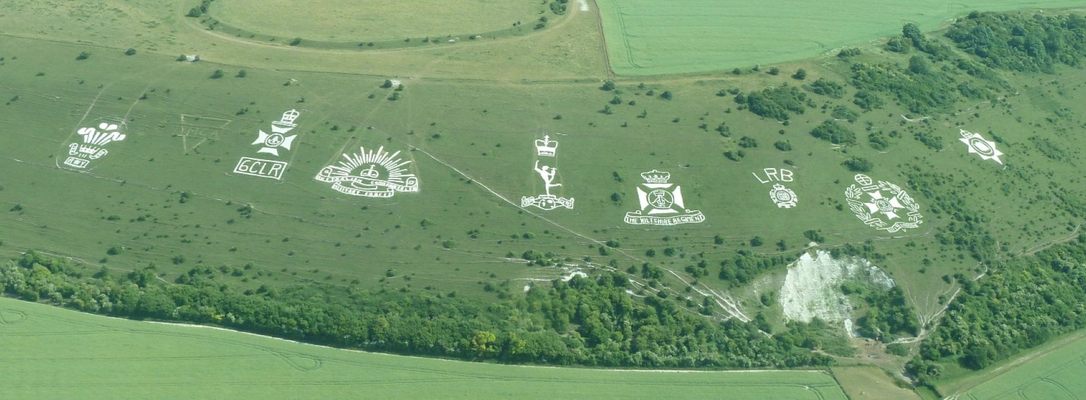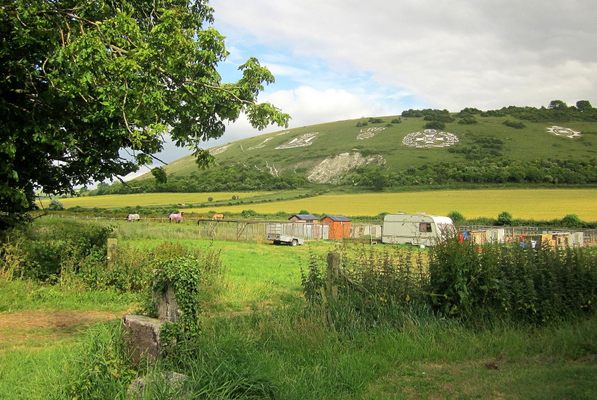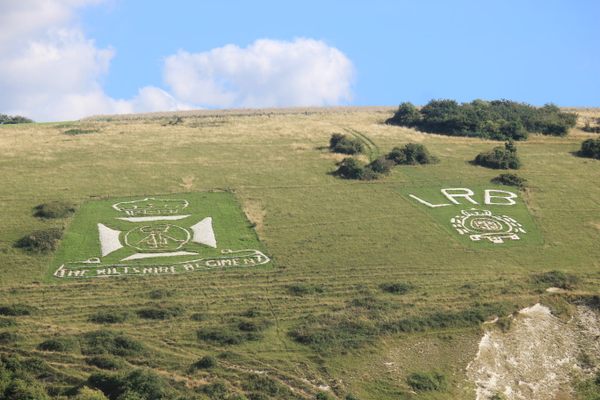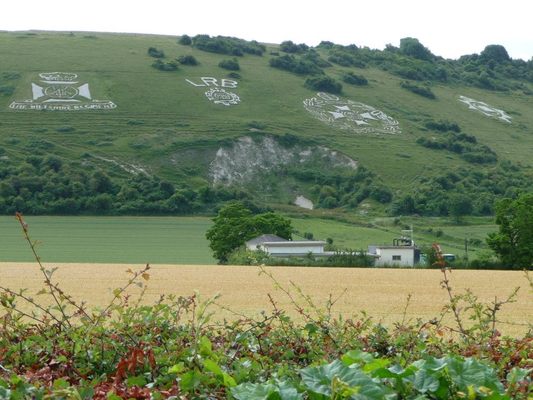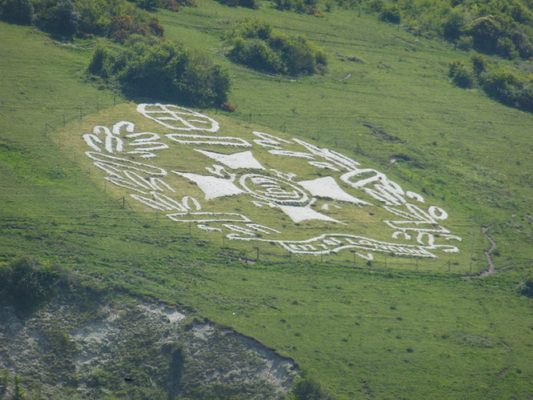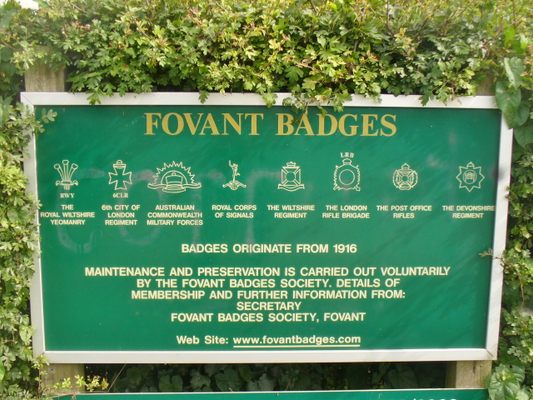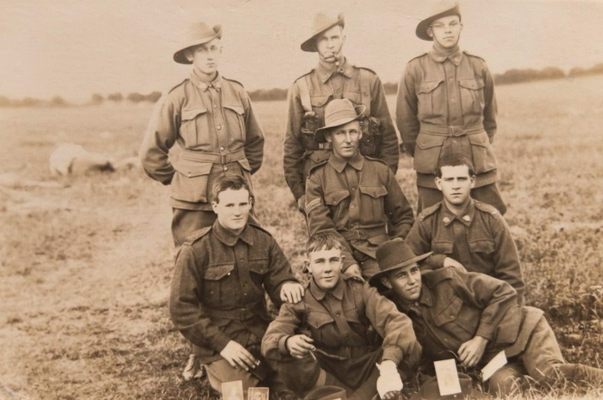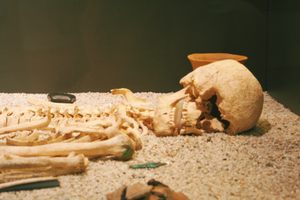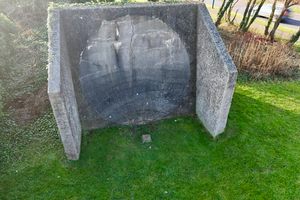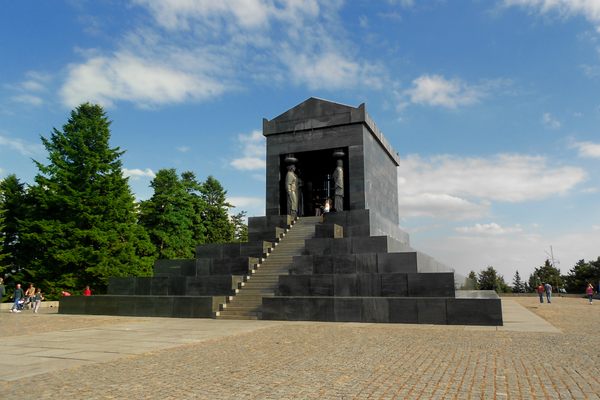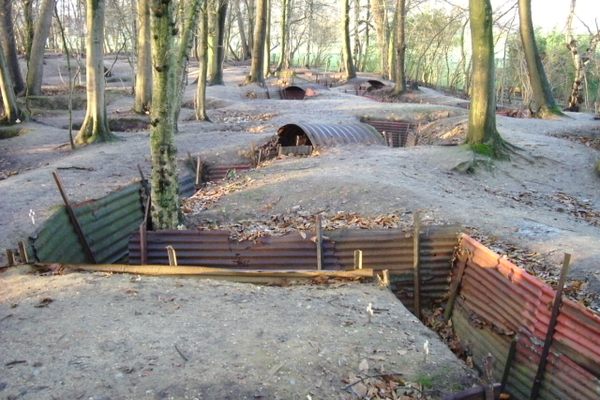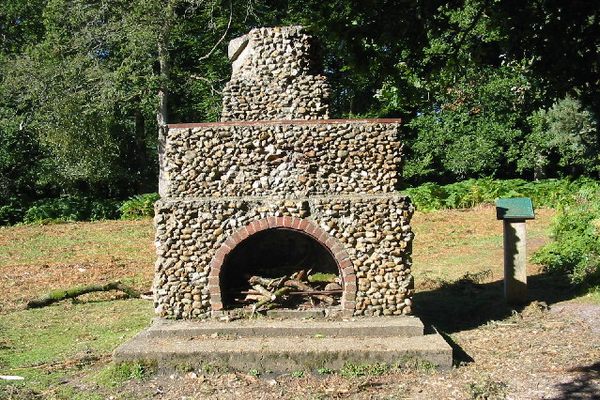About
With the outbreak of World War I in July 1914, Herbert Kitchener, the British Secretary of State for War, recommended the formation of an all-volunteer army of some 500,000 troops. Military camps were created to house and train this New Army, as it was called, including one in the village of Fovant in Wiltshire.
Many of the soldiers who were trained at Fovant never returned from the Western Front, having given their lives on the battlefields of France (in total, about 744,000 British soldiers died during the war). In remembrance of their fallen colleagues, those that did return to Fovant began to carve their regimental badges into the nearby chalk hills.
The soldiers made the badges by cutting into the grass-covered hillside. They then refilled the trenches with chalk from a nearby slope, using up to 50 tons of chalk per badge. On average, each badge took 50 men about six months to complete.
The first badge was created in 1916, probably by the London Rifle Brigade. By the end of World War I, some twenty badges had been etched into the hillside looking over Fovant. In the years after World War I, local workers from Fovant and other surrounding villages maintained the badges, with the support of the Regimental Associations. During World War II, however, the badges were deliberately left untended so that the overgrowth would hide them from enemy aircraft, which could otherwise use the badges as navigational landmarks.
By the end of World War II, the badges were at risk of fading away completely, but the Fovant Home Guard began a restoration project. Between 1948 and 1951, members of the association added two more badges to commemorate their own service in World War II, creating the badges of the Wiltshire Regiment and the Royal Wiltshire Yeomanry. The last regimental badge was added in 1970 for the 50th anniversary of the Royal Corps of Signals.
Today, eight badges can still be seen in the hills above Fovant. Alongside the three later badges, five remain from World War I: the 6th City of London Regiment, the London Rifle Brigade, the Post Office Rifles, the Devonshire Regiment, and the Australian Commonwealth Military Forces.
Each year in June, the Fovant Badges Society tends to the badges. The voluntary organization typically re-chalks at least two, and normally three, badges annually, after first carefully re-edging each badge with a spade to ensure the detail is maintained. Thanks to the efforts of the Fovant Badges Society, the badges still sit proudly above Fovant, a reminder of the sacrifice of so many young soldiers.
Related Tags
Know Before You Go
The Fovant Badges are cut into a chalk hill on Fovant Down, near Fovant in southwest Wiltshire. They are located between Salisbury and Shaftesbury on the A30 road, about half a mile southeast of Fovant. You can get a good view of all eight badges from the A30 as it runs through the village. A few more badges are located in the surrounding area.
There is a lay-by on the A30 adjacent to the badges, with a display board. There is a tall hedge in the way which is not always kept trimmed, and proves an unfortunate barrier to shorter people and wheelchair users.
Published
August 26, 2019
